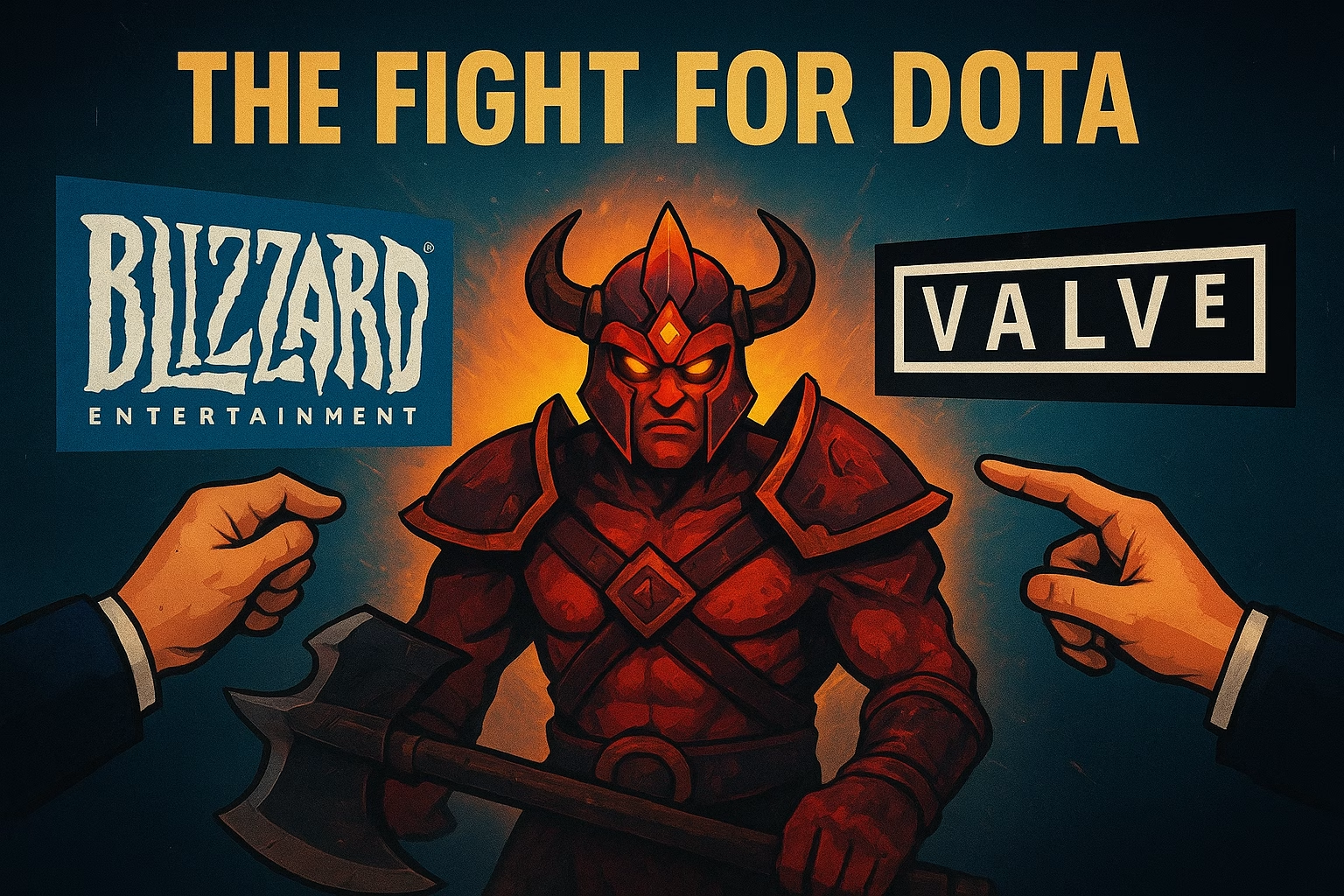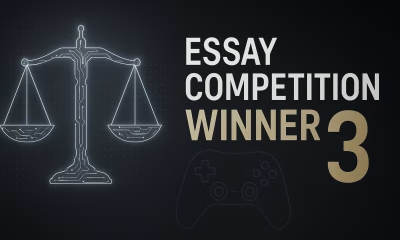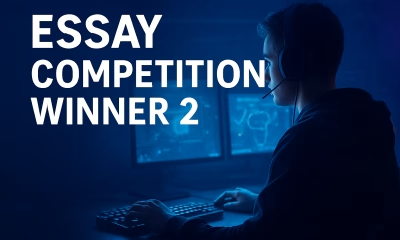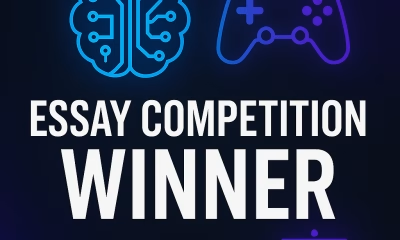IP
The Fight for Dota: Behind the Power Struggle Between Blizzard and Valve

Table of Contents
Introduction
In the evolution of video games, few phenomena illustrate the tension between community creativity and corporate control as vividly as the story of Defense of the Ancients (Dota). Emerging in the early 2000s as a community-made modification (mod) for Blizzard Entertainment’s Warcraft III: Reign of Chaos, Dota grew far beyond its origins. A project driven by passionate modders evolved into a global sensation, laid the foundations of the Multiplayer Online Battle Arena (MOBA) genre, and eventually spawned Dota 2, a flagship title of the contemporary esports industry.
This global phenomenon not only captivated millions of players worldwide but also laid the foundations for an entire new genre. Dota’s transformation from mod into a multimillion-dollar franchise raised difficult questions about ownership, trade mark and the legal status of community-developed content. The game’s transformation from a free, community-driven mod into a franchise raised complex and unprecedented questions about intellectual property (IP), derivative works, authorship, and the legal recognition of collaborative creative labour in digital spaces.
The 2012 settlement between Blizzard Entertainment and Valve Corporation over the rights to the ‘Dota’ trade mark highlighted deep questions about intellectual property (IP). While the dispute was formally a trade mark disagreement, it reflected broader tensions over authorship, community labour, and corporate appropriation. As David Tan notes, Dota exemplifies the challenges of translating diffuse community creation into enforceable legal ownership, highlighting the need for nuanced approaches to IP in participatory cultures.[1]
From Community Mod to Cultural Phenomenon
Dota’s history begins with modding culture, which has long facilitated user-driven innovation in video games. The earliest iteration was created by Eul, who adapted the StarCraft custom map Aeon of Strife for Warcraft III in 2003, utilizing Blizzard’s World Editor.[2] These tools enabled modders to manipulate game mechanics, design new characters, and implement unique abilities.
The mod evolved through contributions from Steve “Guinsoo” Feak, who introduced Dota Allstars, and later IceFrog,[3] who refined balance, introduced new heroes, and maintained the codebase. These contributions were voluntary, collaborative, and community-focused, illustrating a decentralized authorship model. Tan describes this as a “mosaic of contributions,” complicating the traditional notion of copyright, which presupposes singular authorship and clear ownership chains.[4]
The mod’s popularity was amplified by online forums, Battle.net tournaments, and fan-driven guides. Players refined strategies collaboratively, creating a self-regulating ecosystem that contributed to Dota’s gameplay depth and longevity. Its competitive structure curated modern esports, demonstrating that community projects can rival professionally developed titles in both complexity and cultural impact.
From a legal perspective, Dota exemplifies derivative work challenges. The underlying Warcraft III assets are Blizzard’s property, but the code, mechanics, and heroes introduced by modders are arguably original. Derivative works doctrine recognises that secondary creators must obtain permission from the original copyright holder before commercialisation. However, informal norms within the modding community often diverged from formal legal frameworks, leaving Dota in a grey area between community innovation and corporate property.[5] The community’s investment in the game created de facto authority for IceFrog and other modders, yet Blizzard retained ultimate legal rights over the platform and tools.
The Legal Struggle Over Dota: Valve’s Claim and Blizzard’s Challenge
By 2009, as esports surged globally, companies recognised Dota’s potential. Valve hired IceFrog to develop a standalone sequel, a move that signalled Valve’s intent to commericalise the Dota brand. In 2010, Valve filed trade mark applications for the name “Dota” across several categories, seeking exclusive rights. This triggered immediate concern with Blizzard, which publicly argued that Dota had become synonymous with its Warcraft III ecosystem and therefore should not be appropriated by another publisher. Blizzard filed a formal opposition with the US Patent and Trademark Office (USPTO), contending that Valve’s claims were improper and would confuse consumers.[6]
Valve’s legal rationale was grounded in first-use principles and commercial investment. By hiring IceFrog, redesigning the game engine, and planning worldwide distribution, Valve asserted that it had acquired de facto authorship rights over the contemporary iteration of Dota.
Editorial by game-industry journalists reported the dispute with dramatic flourish: two titans of PC gaming sparring over a fan-made title neither had originally authored. Blizzard asserted that Dota belongs to the community, suggesting that Valve’s attempt at exclusive ownership contradicted the game’s cultural lineage. Valve countered that through getting the original creator and through re-developing the game from scratch, it held a legitimate commercial interest in establishing a formal brand identity.[7]
The legal conflict was intricately linked to trade mark principles. Trade marks protect indicators of origin, names, logos, or symbols that consumers associate with a specific commercial source. Blizzard argued that the term Dota already functioned as a community identifier within the Warcraft III modding ecosystem, and therefore, Valve’s exclusive claim would cause misleading associations. Valve argued that Blizzard had never commericalised Dota, had never sought trade mark protection, and had no formal authorship stake in the mod’s evolution.[8]
The 2012 settlement allowed Valve exclusive commercial use of Dota trade mark while Blizzard retained rights to non-commercial, community-driven use in custom maps. Consequently, Blizzard’s planned commercial project (later Heroes of the Storm) was rebranded, preserving community engagement without infringing Valve’s commercial rights.[9]
This resolution reflected a compromise acknowledging both historical lineage and commercial reality. Valve’s new game required a recognisable and protectable brand identity for global esports expansion. Blizzard preserved the modding legacy without holding a position that would stifle Valve’s developments.
Legal scholars have since examined this settlement as emblematic of the tensions inherent in fan-created content. Tan’s influential analysis argues that the dispute illustrates how major companies strategically reinterpret community labour when commercial opportunities arise, questioning long-standing assumptions about authorship, collective creation, and derivative works in gaming.[10] Valve’s commercial victory marked the end of Dota’s uncertain adolescence and the beginning of its institutional future.
Intellectual Property, Modding Culture, and the Future of Interactive Entertainment
Dota’s legal saga exemplifies the complexities of derivative work ownership in digital gaming. Modders contributed significantly, designing heroes, scripting abilities, and balancing mechanics, yet the absence of formal contributor agreements meant these contributions had limited legal enforceability. Courts generally hold that derivative works cannot be commericalised without the primary copyright holder’s consent, a principle seen in Micro Star v FormGen Inc (1998), which establishes that derivative works based on pre-existing games require authorisation.[11]
This legal framework highlights a structural asymmetry: corporate entities possess legal tools to enforce ownership, while community creators operate in informal or collaborative environments that emphasise recognition, not remuneration. Furthermore, derivative work disputes reveal tensions between law and participatory culture. While IP law emphasises economic rights and clear authorship, the modding ecosystem thrives on collective creativity, informal attribution, and iterative improvements.[12] Dota’s evolution demonstrates that formal IP law often lags behind digital cultural practices, requiring legal scholars and policymakers to rethink conventional notions of ownership.
Blizzard’s End-User License Agreements (EULAs) explicitly grant the company rights over all custom maps created within Warcraft III.[13] Such clauses provide Blizzard with unchecked legal control over derivative works, including commercial exploitation or distribution. Yet, Dota’s modding community exercised de facto control, maintaining versions, enforcing balance, and establishing norms that governed gameplay and community conduct.
This interplay illustrates a persistent tension between formal legal authority and game creators. The modding community established governance structures, forums, versioning, and consensus-driven hero updates that effectively oversaw the creative direction of Dota. While Blizzard retained legal authority, IceFrog and other modders shaped the game’s evolution in practice. This duality illustrates the need to examine how law interacts with digital culture, and whether EULAs should accommodate shared creative rights in platforms.
Dota’s transition into Dota 2 demonstrates the economic and strategic importance of IP clarity. Valve leveraged the Dota brand to establish a global esports platform, including the International, a tournament series with prize pools exceeding $30 million.[14] This required a legally protected trade mark, ensuring exclusivity for sponsorship, media rights, and merchandising.
The Blizzard v. Valve dispute thus has significant implications for competitive gaming ecosystems. Without clearly defined IP ownership, companies cannot secure commercial contracts, market products internationally, or develop professional leagues. For modders, this raises the question: how can community labour be recongised or rewarded when corporate entities control the commercial IP?
In addition, the dispute influenced brand strategy and community perception. Valve’s stewardship of Dota 2 captialised on the existing community’s attachment to the name and mechanics, demonstrating how IP control extends beyond legal compliance into cultural influence. Blizzard, in retaining non-commercial rights, preserved goodwill with its modding community, illustrating that legal resolutions often require balancing corporate interests with modders’ creative rights.
Dota’s trajectory offers valuable insights for legal reform and platform policy. One important consideration is the implementation of contributor licenses and attribution, which could formally recognise modders’ creative contributions. Such agreements could protect the rights of community creators while preserving the collaborative, innovative nature of modding, ensuring that legal mechanisms do not stifle creativity.[15]
Another avenue for reform is the development of revenue-sharing models. By allocating a share of commercial profits to contributors, companies can better align legal ownership with the cultural labour that drives derivative works. This approach not only acknowledges the efforts of the community but also fosters sustainable engagement, incentivising continued participation and innovation within digital ecosystems.
By situating Dota within broader debates around modding, esports, and digital IP property, policymakers and legal scholars can better appreciate the implications of derivative works in interactive entertainment. These lessons highlight the importance of legal frameworks that both protect commercial rights and recognise the indispensable contributions of the community, fostering innovation.
Conclusion
Dota’s evolution from a simple Warcraft III custom map to a global esports phenomenon illustrates the delicate balance between community creativity, corporate interests, and legal approaches. This trajectory demonstrates not only the power of innovation but also how formal legal and commercial structures can appropriate, regulate, and monetise community-driven creations.
The Blizzard v. Valve trade mark dispute highlights the tension inherent in such transitions. While the mod community collectively developed Dota over many years, Valve’s acquisition of IceFrog and subsequent trade mark filings illustrated a commercial claim. Blizzard’s opposition highlighted the cultural and communal significance of Dota, emphasising that its identity was inseparable from the Warcraft III modding ecosystem. The eventual 2012 settlement, granting Valve exclusive commercial rights while preserving non-commercial community usage, resolved the immediate conflict but left open questions about authorship, attribution, and fair recognition for gaming contributors.
For legal scholars, Dota is a powerful case study in the limits of existing intellectual property frameworks, particularly in contexts of collaborative, derivative creation. Current laws often fail to account for communities whose contributions shape products in ways that are legally unrecognised yet culturally indispensable. For players and modders, the story of Dota illustrates the impact that collective effort can have on the evolution of an entire genre, proving that innovation does not always emerge from traditional corporate hierarchies.
[1] David Tan, ‘Owning the World’s Biggest Esports: Intellectual Property and DOTA,’ Harvard Journal of Law & Technology Volume 31, Number 2 Spring 2018.
[2] Ibid.
[3] Dota 2 Wiki, ‘Guinsoo’ https://dota2.fandom.com/wiki/Guinsoo
[4] David Tan, ‘Owning the World’s Biggest Esports: Intellectual Property and DOTA,’ Harvard Journal of Law & Technology Volume 31, Number 2 Spring 2018.
[5] Ibid.
[6] Blizzard Entertainment Inc, ‘Notice of Opposition to Valve Corporation Applications’ (USPTO filing, 2011).
https://ttabvue.uspto.gov/ttabvue/ttabvue-91202572-OPP-1.pdf
[7] Wesley Yin-Poole, ‘Dota trademark: Blizzard, Valve respond,’ (Eurogamer, 2011). https://www.eurogamer.net/dota-trademark-blizzard-valve-respond
[8] Ibid.
[9] David Tan, ‘Owning the World’s Biggest Esports: Intellectual Property and DOTA,’ Harvard Journal of Law & Technology Volume 31, Number 2 Spring 2018.
[10] Ibid.
[11] Micro Star v FormGen Inc.154 F.3d 1107 (9th Cir. 1998).
[12] David Tan, ‘Owning the World’s Biggest Esports: Intellectual Property and DOTA,’ Harvard Journal of Law & Technology Volume 31, Number 2 Spring 2018.
[13] Blizzard End User License Agreement (2024).
https://www.blizzard.com/en-us/legal/fba4d00f-c7e4-4883-b8b9-1b4500a402ea/blizzard-end-user-license-agreement
[14] Kurt Lozano, ‘How the prize pools for Dota 2’s The International became the biggest in esports,’ (OneEsports, 2022).
https://www.oneesports.gg/dota2/dota-2-prize-pool-international-esports/
[15] David Tan, ‘Owning the World’s Biggest Esports: Intellectual Property and DOTA,’ Harvard Journal of Law & Technology Volume 31, Number 2 Spring 2018.



















